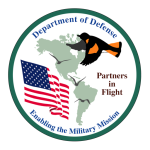The Panama Canal Treaty of 1977 stated that lands currently held by the United States were to revert back to Panamanian ownership and control by the year 2000. Recognizing the significance of the canal lands to the biodiversity of Panama, as well as the United States and countries in between, DoD PIF convened several meetings to bring together biologists, economic development leaders, and politicians. The International Working Group of PIF met in Panama City in 1996 to document the economic, ecological, and cultural values associated with the canal lands. The report, The Key Role of Specific Lands in the Panama Canal Area in Preserving the Value of Panama’s Natural Heritage, was distributed to interested partners throughout Panama. A follow-up workshop held in 1998 built on the previous workshop and explored options for obtaining the right balance of conservation and economic sustainability. As a result of these efforts, Panama has a developing ecotourism effort, and over 150,000 acres of former DoD lands are now identified as Important Bird Areas. Many of the best of these lands have been incorporated into Panama’s national park system.
The Upper Bay of Panama hosts some of the largest concentrations of migrant and overwintering shorebirds in the Western Hemisphere. A study funded through DoD PIF documented a high single day count of nearly 300,000 Western Sandpipers in fall migration. The study helped the upper Panama Bay achieve status as both a Western Hemisphere Shorebird Reserve Network site of hemispheric significance and a RAMSAR site (wetland of international significance). A resurvey was conducted in the fall of 2008 to assess changes over the previous decade. Current efforts, funded by the Legacy program, are examining this species” use of military lands as migration stopover sites linking Panama, Mexico, the U.S. and Canada.

